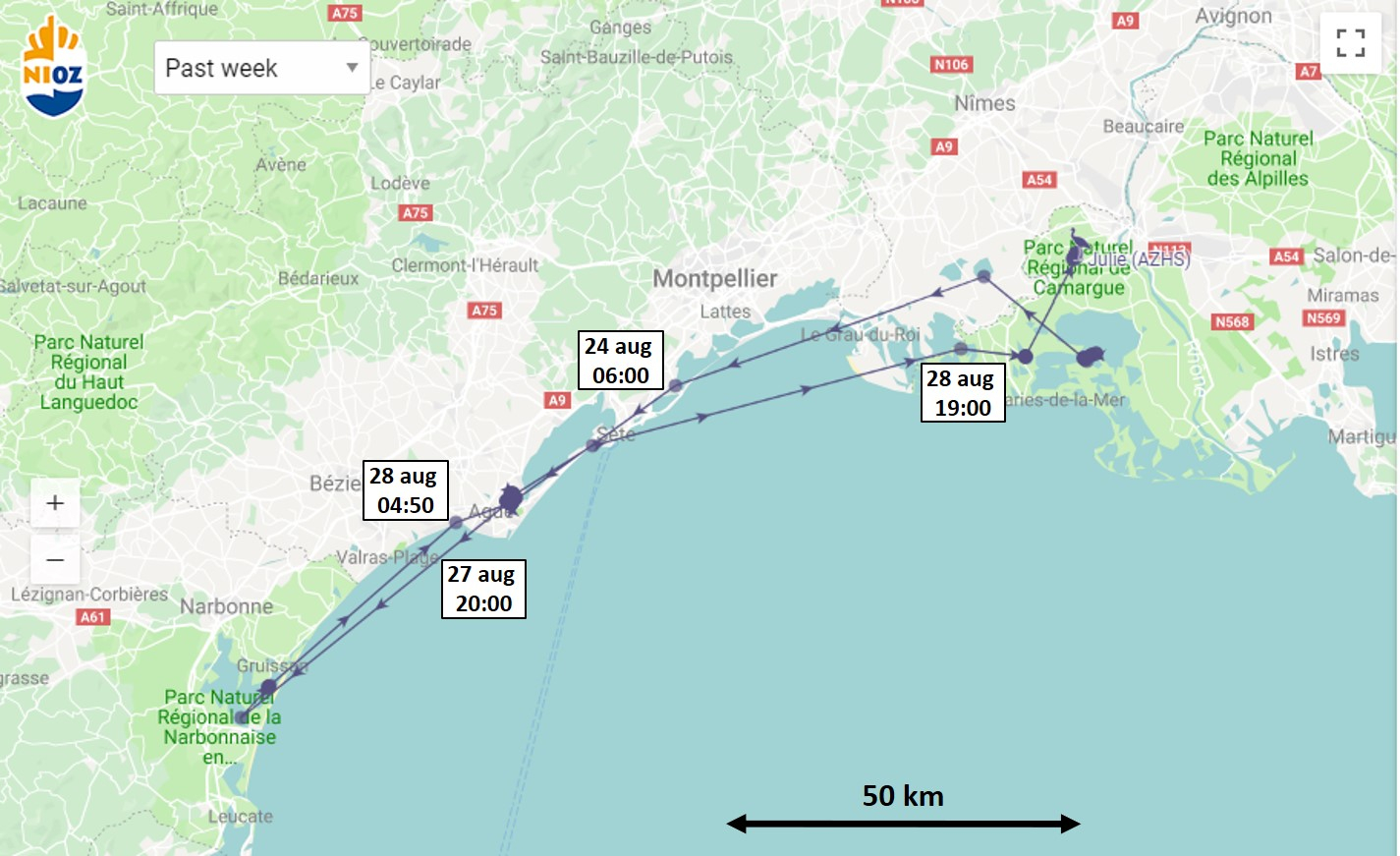As already mentioned in the previous blog, the Camargue juveniles move around a lot more than the juveniles from Schiermonnikoog. Last week, spoonbill Julie showed quite an impressive post-fledging dispersal trip: in 6 days time, she travelled about 300 km, during which she visited several wetlands. First, she flew to the Réserve naturelle de Bagnas, where she stayed for 4 days, then continued to Étang de l’Ayrolle, where she only stayed one night, after which she returned again to the Camargue:

It remains speculation why the Camargue juveniles are roaming around much more than the Schiermonnikoog birds: perhaps food availability is lower in the Camargue at that time of the year because ponds are drying rapidly than in the Wadden Sea, where the birds rely on predictable tides. In addition, some seemingly quiet ponds became suddenly disturbed by the onset of the hunting season of ducks on the 21st of August in South of France. The accelerometer data that the transmitters are collecting may help us solve this question, as these data allow the estimation of a bird’s behaviour (e.g. resting, flying, foraging, and even swallowing a prey!) and the time allocated to different behaviours (e.g. how much time does a bird spend foraging per day?).